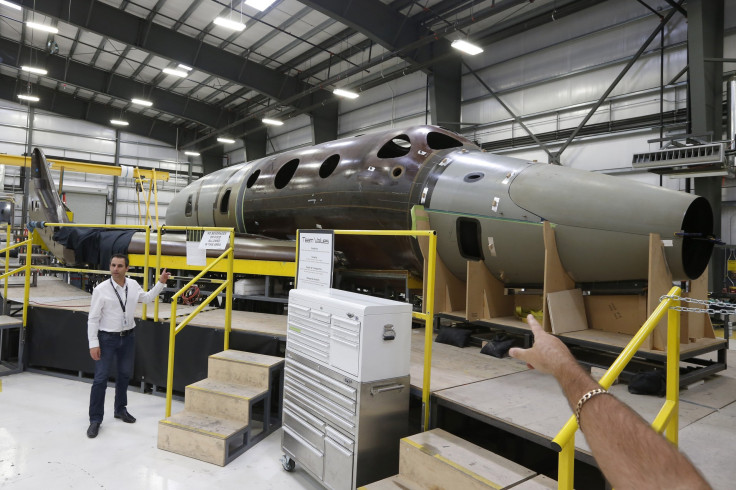What Is SpaceShipTwo? 5 Facts About Virgin Galactic's New Tourism Spacecraft

Virgin Galactic is pushing ahead with plans to send tourists into space. More than a year after an accident killed one of its pilots and set back the young industry, the company is set to introduce its SpaceShipTwo spacecraft Friday at California’s Mojave Air & Space Port.
The new spacecraft looks “beautiful,” according to company founder Richard Branson, noting it is the result of “day-and-night” work for more than 15 months. Some 700 engineers worked on the rocket, Wired reported.
"We've got some wonderful surprises later on today," Branson repotedly told Good Morning Britain Friday.
What is SpaceShipTwo? The spacecraft is designed to carry up to six passengers and two crew members on a high-speed, five-minute flight into space. The spaceship is initially carried beneath the wing of a larger aircraft and then released at an altitude of about 45,000 feet (cruising altitude for typical passenger flights is about 33,000 feet), at which point it briefly glides before rocketing into the fringes of space. After reaching its highest point, about 62 miles above earth, it will start falling back toward earth, toward the runway.
Virgin Galactic to roll out new SpaceShipTwo space tourism rocket after fatal 2014 crash https://t.co/Zfsh8tNqWP pic.twitter.com/pRAJFG1YLz
— Chicago Tribune (@chicagotribune) February 19, 2016
When will passengers be able to go? Hundreds of people have already signed up for the brief ride into space. While pre-sale tickets started at a cost of around $200,000, they were raised to $250,000, Space reported. The company has not yet projected a timeline for carrying tourists into space.
“Our new vehicle will remain on the ground for a while after her unveiling, as we run her through full-vehicle tests of her electrical systems and all of her moving parts," the company said on its website.
What happened last time? The first SpaceShipTwo broke apart during its fourth flight, on Oct. 31, 2014. An investigation into the incident revealed that co-pilot Michael Alsbury prematurely unlocked the feathering system that is meant to slow the aircraft down as it returns into the atmosphere. Alsbury died in the accident, but pilot Peter Siebold managed to parachute safely to the ground.
An investigation by the National Transporation Safety Board found that the spacecraft was ill-equipped to sufficiently account for potential human error. It also found poor pilot training as possibly responsible.
Soon, we unveil our new #SpaceShipTwo & celebrate a technical milestone called rollout. What is that? What's next?https://t.co/WgND8j3DfR
— Virgin Galactic (@virgingalactic) February 18, 2016
Is it safer this time? The last crash marked a major setback for Virgin Galactic and they seemed to be trying to assure skeptics this time would be different. Branson called the last accident a “horrendous day” but said people counted on the company to “push the barriers forward.”
“We’ve pulled in experienced leaders from NASA’s mission control and astronaut corps, from the militaries of three nations and from leading aviation and transportation companies, and we’ve charged them with developing a plan to safely test and operate a reusable spacecraft," the company website said. "They have done their homework and subjected their processes to expert external reviews, and they are eager to take the proverbial keys to SpaceShipTwo. ”
Are other projects in the works? The private space tourism industry, although still nascent, is starting to boom. Elon Musk’s SpaceX and Jeff Bezos’s Blue Origin also have plans to carry eager customrs into space.
© Copyright IBTimes 2025. All rights reserved.





















